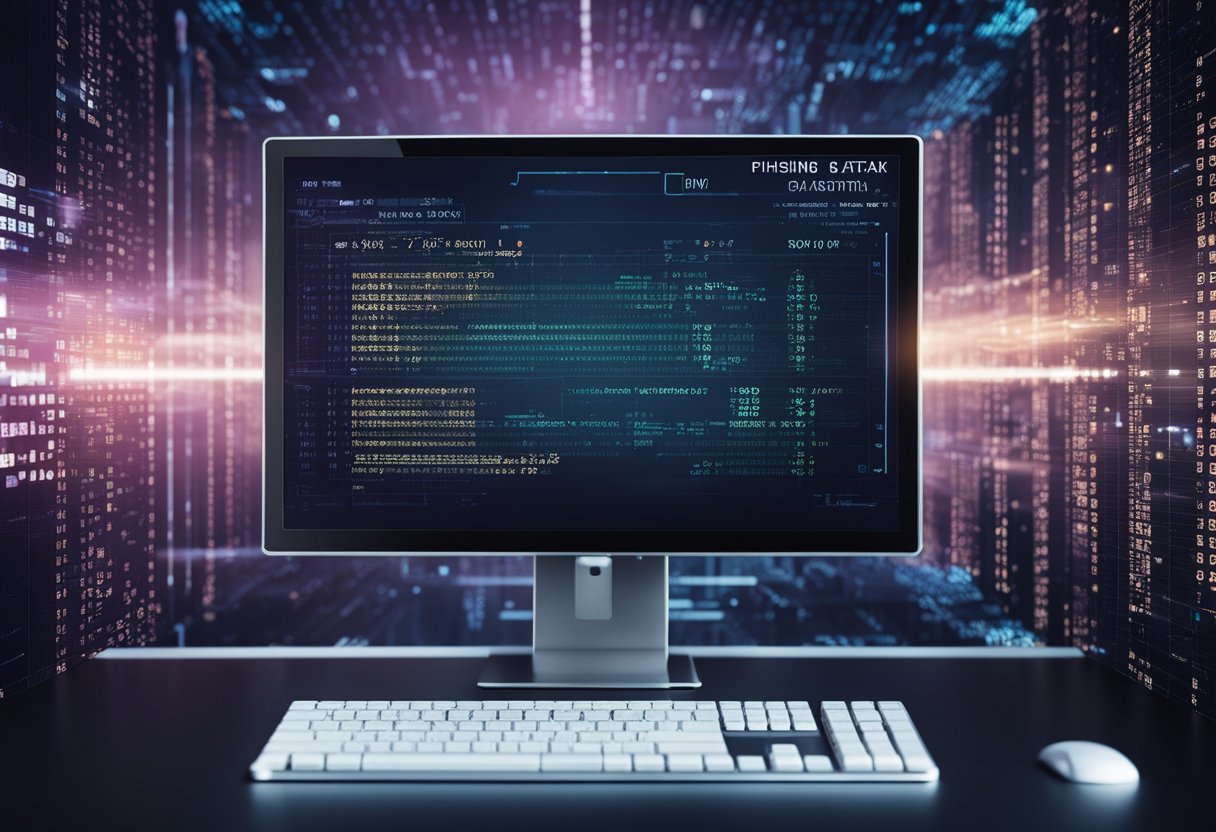- How Cybercriminals Exploit Artificial Intelligence Techniques
- Understanding AI in Cybercrime
- Defence Against AI-Powered Threats
- Impact and Response to AI-Enabled Phishing
How Cybercriminals Exploit Artificial Intelligence Techniques
Cybercriminals are now using artificial intelligence to create more sophisticated AI-Powered phishing attacks. These AI-powered tactics allow them to craft convincing emails and messages that can easily deceive individuals and organisations. By leveraging AI, cybercriminals can automate and personalise their attacks, making it harder for people to spot scams.

As technology advances, so do the techniques used by those with malicious intent. Cybersecurity experts must stay alert to these evolving threats. Understanding how AI enhances phishing schemes is essential for anyone looking to protect themselves from potential risks.
Awareness of AI-driven phishing attacks is crucial in today’s digital world. Recognising the signs of these attacks can help individuals take proactive steps to safeguard their personal and financial information. The fight against cybercrime is ongoing, and knowledge is one of the most effective tools available.
Understanding AI in Cybercrime

AI has changed the landscape of cybercrime. Cybercriminals now use AI to create more sophisticated phishing attacks, employing tools that enhance their tactics. This section explores how AI evolves phishing methods, the tools criminals use, and the role of deepfakes in social engineering.
Evolution of Phishing with AI
Phishing attacks have developed significantly with AI. In the past, basic emails tricked users into revealing personal details. Now, AI can generate convincing messages tailored to each victim.
Machine learning models analyse vast amounts of data to identify potential targets. They predict what language or offers will attract victims. This customisation makes phishing attempts harder to spot and increasing success rates for attackers.
Modern phishing schemes can mimic legitimate sources, including trusted companies or friends. They use advanced language processing to sound realistic. Such intelligence makes AI a powerful tool for cybercriminals.
AI Tools Used by Cybercriminals
Several AI tools have emerged that aid cybercriminals in launching attacks. For example, natural language processing (NLP) is used to craft coherent messages. These messages can trick victims into clicking malicious links.
Some criminals employ AI-driven bots that automate responses, managing numerous phishing attempts at once. This efficiency allows them to target broad audiences with minimal effort.
AI can also help analyse successful attacks to improve future tactics. By studying patterns in victim behaviour and responses, cybercriminals refine their methods, making them more dangerous.
Deepfakes and AI-Driven Social Engineering Attacks
Deepfakes are becoming a major tool in cybercrime. These are realistic-looking fake videos or audio recordings created using AI. They can be used to impersonate individuals, making scams more believable.
Cybercriminals leverage deepfake technology to manipulate public figures or employees within organizations. This strategy, combined with social engineering, exploits trust and can lead to significant data breaches or financial losses.
The impact of deepfakes goes beyond simple impersonation. They create confusion, eroding public trust in media and communication. The sophistication of these tactics makes it essential for individuals and organizations to remain vigilant and informed.
Defence Against AI-Powered Threats

To protect against AI-powered threats, organisations need to implement strong security measures. This includes multi-factor authentication, secure email gateways, and regular training for employees. Each of these elements plays a critical role in creating a robust defence.
Importance of Multi-Factor Authentication (MFA)
Multi-factor authentication (MFA) adds an extra layer of security. It requires users to provide two or more verification factors to gain access. This can include something they know (a password), something they have (a mobile device), or something they are (a fingerprint).
By using MFA, even if a password is compromised, attackers still need the additional verification to gain access. Many services now offer MFA, making it easier for users to enable this important security feature. Continuous adoption of MFA helps in building a zero-trust security environment, where trust is never assumed.
Secure Email Gateways (SEGs) and Email Authentication
Secure Email Gateways (SEGs) help filter out malicious emails. They protect users by scanning incoming messages for threats and blocking phishing attempts. SEGs often use AI to detect advanced phishing techniques.
Email authentication methods, like SPF, DKIM, and DMARC, are essential. These protocols help verify whether an email comes from a legitimate sender. By implementing these measures, organisations can reduce the risk of falling victim to AI-driven phishing scams.
Training and Security Awareness
Training employees in security awareness is crucial. Regular workshops and training sessions help staff identify suspicious emails and links. This empowers employees to be the first line of defence against phishing attacks.
Phishing simulations can also be beneficial. They allow employees to practice recognising threats in a safe environment. Regular updates on the latest phishing tactics keep security awareness fresh. Continuous education ensures that all employees remain vigilant and informed about emerging AI threats.
Impact and Response to AI-Enabled Phishing

AI-powered phishing attacks have significant effects on both individuals and businesses. They lead to financial losses and create a changing threat landscape. Effective responses include better threat detection and enhanced security training.
Economic Implications of AI-Powered Phishing
AI-Powered phishing attacks can cause substantial financial losses. For individuals, these attacks may lead to lost savings or identity theft. Businesses face even larger risks, including the potential loss of sensitive customer data. This can result in costly legal fees and reputational damage.
According to recent studies, businesses can lose millions annually due to successful phishing attacks. Replacing compromised accounts and restoring damaged systems adds to these costs. As these attacks grow more sophisticated, the expenses associated with prevention and recovery also increase.
The Changing Threat Landscape
The threat landscape is evolving due to AI. Cybercriminals now have access to advanced tools that automate and personalise phishing attempts. This automation allows them to create highly convincing messages that are harder to detect.
Business email compromise (BEC) scams are on the rise. Attackers are using AI to mimic trusted contacts and trick employees into transferring funds or data. As the tactics of these criminals become more sophisticated, organisations need to stay vigilant.
Strategies for Threat Detection and Intelligence
Effective threat detection is crucial for combating AI-enabled phishing. Organisations are adopting advanced security software that uses machine learning to identify suspicious patterns. This technology can analyse vast amounts of data quickly and efficiently.
Security awareness training is also essential. Employees should be taught to recognise phishing attempts and respond appropriately. Regular updates and simulations keep everyone informed about new threats. By combining technology and training, organisations can create a robust defence against these evolving attacks.






